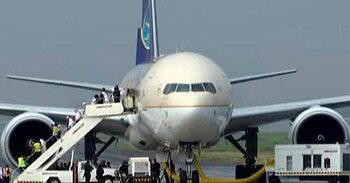Near-Disaster Averted! TUI Plane's Mid-Air Pressure Failure Risks Hypoxia for 187 Passengers
A TUI Boeing 737-8K5 carrying 187 passengers from Manchester Airport to Kos, Greece, experienced a terrifying mid-air incident on October 17, 2023. The aircraft, just six minutes into its journey, suffered a serious cabin pressure failure, putting the crew and passengers at significant risk of hypoxia—a dangerous lack of oxygen in body tissues.
The Mid-Air Emergency: Cabin Depressurization
The Air Accidents Investigation Branch (AAIB) report, released this month, detailed a chilling sequence of events. A cabin altitude warning, indicating a "serious incident," activated as the plane passed 13,000 feet. The investigation revealed that both engine bleed air systems—critical for cabin pressurization—had been inadvertently left off by maintenance engineers following routine work, and not reactivated. This oversight resulted in the aircraft's failure to pressurize during ascent. After the crew discovered and rectified the problem, another caution indicated a fault with the right air conditioning unit.
The Crew's Response and the Passengers' Ordeal
Upon realizing the failure, the crew immediately switched on both systems. The plane continued its ascent, though reaching only 20,000 feet before the master caution lit up. The commander, after consulting with maintenance control, made the crucial decision to return to Manchester Airport. Because the aircraft exceeded maximum landing weight, it had to execute a holding pattern to burn off fuel before landing safely at 8:10 am. During this 43-minute period, the cabin altitude warning light remained illuminated. Although passenger oxygen masks didn't deploy, the report states, "it was likely that the crew and passengers were exposed to a progressive hypoxia risk." While a loss of consciousness was deemed highly improbable, the report emphasized a probable negative impact on the crew's cognitive functions and decision-making abilities. The incident highlights the critical importance of rigorous maintenance procedures and pilot awareness.
The Risk of Hypoxia: Cognitive Impairment
The AAIB report stressed the potential for hypoxia at altitudes between 10,000 and 14,000 feet to impair cognitive performance and decision-making. The severity of such impairment, according to the report, is affected by the duration of exposure, the rate at which hypoxia develops, physical workload, fatigue, individual responses, and the nature of tasks being performed at the time. The fact that the plane didn't reach an altitude that would trigger the automatic deployment of passenger oxygen masks does not negate the real and substantial risks posed.
Pilot Fatigue: A Contributing Factor?
Adding another layer of complexity to the incident, the AAIB report considered pilot fatigue as a potential contributing factor. Both pilots were on standby duty, the commander notified at 1:00 AM and the co-pilot at 2:30 AM, with a 4:30 AM report time, resulting in the commander operating with only three hours of sleep before the flight. While the commander didn't believe fatigue played a direct role, an analysis of his roster showed unusually high exposure to fatiguing duties over the preceding eight weeks. This analysis underlines the inherent strain that can impact pilots and is important consideration for future safety protocols.
A Second Incident: Catastrophic Failure at Leeds Bradford
Adding a layer of concern to this already concerning incident, three days later, on October 20th, the same aircraft was involved in a separate incident at Leeds Bradford Airport during Storm Babet. This time, the plane's nosewheel experienced a "catastrophic failure," causing it to leave the runway upon landing. Thankfully, this second event did not result in injuries. However, the two events occurring so close in time raise serious questions about the overall maintenance and operational procedures of the aircraft.
Aftermath and Ongoing Investigations
The AAIB report underscores the seriousness of the mid-air incident, emphasizing the potential for devastating consequences. TUI has been contacted for comment on both incidents. The investigation will be crucial in determining the exact cause and to review the maintenance and safety procedures to prevent similar incidents in the future. The close calls serve as a stark reminder of the fragility of flight and the importance of unwavering vigilance in ensuring the safety of passengers and crew. The investigation will no doubt provide valuable insights into the safety of air travel.

















